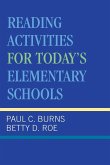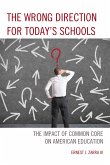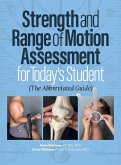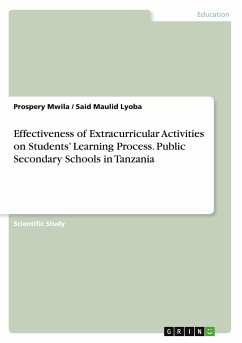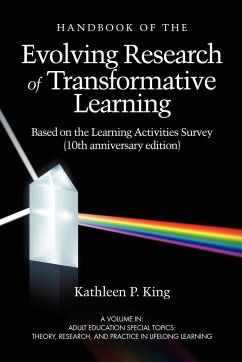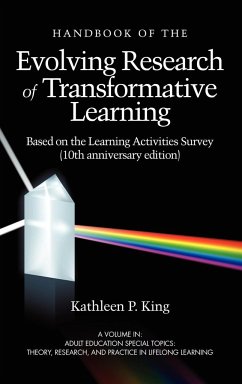- Broschiertes Buch
- Merkliste
- Auf die Merkliste
- Bewerten Bewerten
- Teilen
- Produkt teilen
- Produkterinnerung
- Produkterinnerung
Klesse has reviewed relevant educational research to provide an overview of the essential learning for all youth that is available from participation. The skills learned through student activities provide the foundation for adult participation as citizens of our democracy. So, how do we best prepare our young people for the future? Read this book to find out.
Andere Kunden interessierten sich auch für
![Reading Activities For Today's Elementary Schools Reading Activities For Today's Elementary Schools]() Paul C. BurnsReading Activities For Today's Elementary Schools68,99 €
Paul C. BurnsReading Activities For Today's Elementary Schools68,99 €![The Wrong Direction for Today's Schools The Wrong Direction for Today's Schools]() Ernest J ZarraThe Wrong Direction for Today's Schools152,99 €
Ernest J ZarraThe Wrong Direction for Today's Schools152,99 €![Strength and Range of Motion Assessment for Today's Student Strength and Range of Motion Assessment for Today's Student]() Christi WilliamsStrength and Range of Motion Assessment for Today's Student105,99 €
Christi WilliamsStrength and Range of Motion Assessment for Today's Student105,99 €![Effectiveness of Extracurricular Activities on Students¿ Learning Process. Public Secondary Schools in Tanzania Effectiveness of Extracurricular Activities on Students¿ Learning Process. Public Secondary Schools in Tanzania]() Prospery MwilaEffectiveness of Extracurricular Activities on Students¿ Learning Process. Public Secondary Schools in Tanzania15,95 €
Prospery MwilaEffectiveness of Extracurricular Activities on Students¿ Learning Process. Public Secondary Schools in Tanzania15,95 €![The Handbook of the Evolving Research of Transformative Learning Based on the Learning Activities Survey (10th Anniversary Edition) (PB) The Handbook of the Evolving Research of Transformative Learning Based on the Learning Activities Survey (10th Anniversary Edition) (PB)]() Kathleen P. KingThe Handbook of the Evolving Research of Transformative Learning Based on the Learning Activities Survey (10th Anniversary Edition) (PB)62,99 €
Kathleen P. KingThe Handbook of the Evolving Research of Transformative Learning Based on the Learning Activities Survey (10th Anniversary Edition) (PB)62,99 €![The Handbook of the Evolving Research of Transformative Learning Based on the Learning Activities Survey (10th Anniversary Edition) (Hc) The Handbook of the Evolving Research of Transformative Learning Based on the Learning Activities Survey (10th Anniversary Edition) (Hc)]() Kathleen P. KingThe Handbook of the Evolving Research of Transformative Learning Based on the Learning Activities Survey (10th Anniversary Edition) (Hc)106,99 €
Kathleen P. KingThe Handbook of the Evolving Research of Transformative Learning Based on the Learning Activities Survey (10th Anniversary Edition) (Hc)106,99 €![Teaching the Literature of Today's Middle East Teaching the Literature of Today's Middle East]() Allen WebbTeaching the Literature of Today's Middle East152,99 €
Allen WebbTeaching the Literature of Today's Middle East152,99 €-
-
-
Klesse has reviewed relevant educational research to provide an overview of the essential learning for all youth that is available from participation. The skills learned through student activities provide the foundation for adult participation as citizens of our democracy. So, how do we best prepare our young people for the future? Read this book to find out.
Hinweis: Dieser Artikel kann nur an eine deutsche Lieferadresse ausgeliefert werden.
Hinweis: Dieser Artikel kann nur an eine deutsche Lieferadresse ausgeliefert werden.
Produktdetails
- Produktdetails
- Verlag: Globe Pequot Publishing Group Inc/Bloomsbury
- Seitenzahl: 260
- Erscheinungstermin: 9. April 2004
- Englisch
- Abmessung: 280mm x 210mm x 14mm
- Gewicht: 645g
- ISBN-13: 9781578860876
- ISBN-10: 1578860873
- Artikelnr.: 21084602
- Herstellerkennzeichnung
- Libri GmbH
- Europaallee 1
- 36244 Bad Hersfeld
- gpsr@libri.de
- Verlag: Globe Pequot Publishing Group Inc/Bloomsbury
- Seitenzahl: 260
- Erscheinungstermin: 9. April 2004
- Englisch
- Abmessung: 280mm x 210mm x 14mm
- Gewicht: 645g
- ISBN-13: 9781578860876
- ISBN-10: 1578860873
- Artikelnr.: 21084602
- Herstellerkennzeichnung
- Libri GmbH
- Europaallee 1
- 36244 Bad Hersfeld
- gpsr@libri.de
Edward James Klesse has worked as a junior high school guidance counselor, college career counselor, director of pupil personnel services/high school counselor, and assistant superintendent of schools. Most of his professional career has been spent working in the Windsor Central School District, Windsor, New York. In addition, Klesse has been an adjunct lecturer at the State University of New York at Oneonta, teaching graduate courses in the Department of Educational Psychology and Counseling. For 13 years he was the administrative co-director of the Maine National Leadership Camp, an intensive five day summer leadership training program for high school student, sponsored by the National Association of Secondary School Principals (NASSP). Klesse has also served on numerous scholarship and award committees for NASSP and he has regularly been a staff member for the National Association of Student Council's annual conference.
Chapter 1 List of Tables Chapter 2 Foreword Chapter 3 Acknowledgments
Chapter 4 Introduction Chapter 5 1. What Are Student Activities? Chapter 6
2. Why Do Schools Have School Activity Programs? Chapter 7 3. What Are the
Short-Term and Long Term Benefits of School Activities for Schools? Chapter
8 4. What Are the Short-Term and Long Term Benefits of Student Activities
for Schools? Chapter 9 5. What Are the Short-Term and Long Term Benefits of
Student Activities for Communities? Chapter 10 6. What Is the Difference
between Extracurricular and Cocurricular Activities? Chapter 11 7. How Can
Student Activities Fulfill Today's Standards for Learning? Chapter 12 8.
How Do Sports and Athletics Fit? Chapter 13 9. How Are Student Activities
Evaluated? Chapter 14 10. How Are Students Involved, Especially Those Who
Are Not Motivated? Chapter 15 11. How does the School Finance a Student
Activity Program Fairly and Equitably? Chapter 16 12. What Would a School
Without Student Activities Be Like? Chapter 17 13. How Should Student
Activities Be Organized for Maximum Benefit to Students and School? Chapter
18 14. What is the Ideal versus the Typical Profile of the Teacher-Advisor
to Student Activities? Chapter 19 15. What Will Student Activity Programs
Look Like in Five, Ten, or Fifteen Years? Chapter 20 16. Legal issues and
Considerations for Cocurricular Activities Chapter 21 Appendix A:
Evaluation Procedures for Student Activities Chapter 22 Appendix B: Rules
Governing Participation in Cocurricular Activities for Students-Windsor
Central School District (New York) Chapter 23 Appendix C: Athletic and
Competitive Activity Policies and Procedures for District 211 (Illinois)
Chapter 24 Appendix D: Extracurricular and Cocurricular
Activities-Centerburg School (Illinois) Chapter 25 References Chapter 26
Index Chapter 27 About the Author
Chapter 4 Introduction Chapter 5 1. What Are Student Activities? Chapter 6
2. Why Do Schools Have School Activity Programs? Chapter 7 3. What Are the
Short-Term and Long Term Benefits of School Activities for Schools? Chapter
8 4. What Are the Short-Term and Long Term Benefits of Student Activities
for Schools? Chapter 9 5. What Are the Short-Term and Long Term Benefits of
Student Activities for Communities? Chapter 10 6. What Is the Difference
between Extracurricular and Cocurricular Activities? Chapter 11 7. How Can
Student Activities Fulfill Today's Standards for Learning? Chapter 12 8.
How Do Sports and Athletics Fit? Chapter 13 9. How Are Student Activities
Evaluated? Chapter 14 10. How Are Students Involved, Especially Those Who
Are Not Motivated? Chapter 15 11. How does the School Finance a Student
Activity Program Fairly and Equitably? Chapter 16 12. What Would a School
Without Student Activities Be Like? Chapter 17 13. How Should Student
Activities Be Organized for Maximum Benefit to Students and School? Chapter
18 14. What is the Ideal versus the Typical Profile of the Teacher-Advisor
to Student Activities? Chapter 19 15. What Will Student Activity Programs
Look Like in Five, Ten, or Fifteen Years? Chapter 20 16. Legal issues and
Considerations for Cocurricular Activities Chapter 21 Appendix A:
Evaluation Procedures for Student Activities Chapter 22 Appendix B: Rules
Governing Participation in Cocurricular Activities for Students-Windsor
Central School District (New York) Chapter 23 Appendix C: Athletic and
Competitive Activity Policies and Procedures for District 211 (Illinois)
Chapter 24 Appendix D: Extracurricular and Cocurricular
Activities-Centerburg School (Illinois) Chapter 25 References Chapter 26
Index Chapter 27 About the Author
Chapter 1 List of Tables Chapter 2 Foreword Chapter 3 Acknowledgments
Chapter 4 Introduction Chapter 5 1. What Are Student Activities? Chapter 6
2. Why Do Schools Have School Activity Programs? Chapter 7 3. What Are the
Short-Term and Long Term Benefits of School Activities for Schools? Chapter
8 4. What Are the Short-Term and Long Term Benefits of Student Activities
for Schools? Chapter 9 5. What Are the Short-Term and Long Term Benefits of
Student Activities for Communities? Chapter 10 6. What Is the Difference
between Extracurricular and Cocurricular Activities? Chapter 11 7. How Can
Student Activities Fulfill Today's Standards for Learning? Chapter 12 8.
How Do Sports and Athletics Fit? Chapter 13 9. How Are Student Activities
Evaluated? Chapter 14 10. How Are Students Involved, Especially Those Who
Are Not Motivated? Chapter 15 11. How does the School Finance a Student
Activity Program Fairly and Equitably? Chapter 16 12. What Would a School
Without Student Activities Be Like? Chapter 17 13. How Should Student
Activities Be Organized for Maximum Benefit to Students and School? Chapter
18 14. What is the Ideal versus the Typical Profile of the Teacher-Advisor
to Student Activities? Chapter 19 15. What Will Student Activity Programs
Look Like in Five, Ten, or Fifteen Years? Chapter 20 16. Legal issues and
Considerations for Cocurricular Activities Chapter 21 Appendix A:
Evaluation Procedures for Student Activities Chapter 22 Appendix B: Rules
Governing Participation in Cocurricular Activities for Students-Windsor
Central School District (New York) Chapter 23 Appendix C: Athletic and
Competitive Activity Policies and Procedures for District 211 (Illinois)
Chapter 24 Appendix D: Extracurricular and Cocurricular
Activities-Centerburg School (Illinois) Chapter 25 References Chapter 26
Index Chapter 27 About the Author
Chapter 4 Introduction Chapter 5 1. What Are Student Activities? Chapter 6
2. Why Do Schools Have School Activity Programs? Chapter 7 3. What Are the
Short-Term and Long Term Benefits of School Activities for Schools? Chapter
8 4. What Are the Short-Term and Long Term Benefits of Student Activities
for Schools? Chapter 9 5. What Are the Short-Term and Long Term Benefits of
Student Activities for Communities? Chapter 10 6. What Is the Difference
between Extracurricular and Cocurricular Activities? Chapter 11 7. How Can
Student Activities Fulfill Today's Standards for Learning? Chapter 12 8.
How Do Sports and Athletics Fit? Chapter 13 9. How Are Student Activities
Evaluated? Chapter 14 10. How Are Students Involved, Especially Those Who
Are Not Motivated? Chapter 15 11. How does the School Finance a Student
Activity Program Fairly and Equitably? Chapter 16 12. What Would a School
Without Student Activities Be Like? Chapter 17 13. How Should Student
Activities Be Organized for Maximum Benefit to Students and School? Chapter
18 14. What is the Ideal versus the Typical Profile of the Teacher-Advisor
to Student Activities? Chapter 19 15. What Will Student Activity Programs
Look Like in Five, Ten, or Fifteen Years? Chapter 20 16. Legal issues and
Considerations for Cocurricular Activities Chapter 21 Appendix A:
Evaluation Procedures for Student Activities Chapter 22 Appendix B: Rules
Governing Participation in Cocurricular Activities for Students-Windsor
Central School District (New York) Chapter 23 Appendix C: Athletic and
Competitive Activity Policies and Procedures for District 211 (Illinois)
Chapter 24 Appendix D: Extracurricular and Cocurricular
Activities-Centerburg School (Illinois) Chapter 25 References Chapter 26
Index Chapter 27 About the Author


